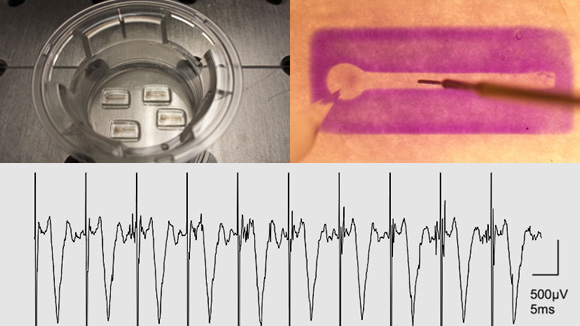
It is important to be able to guide axons from subpopulations of neurons to desired targets for repairing a neural injury or to junction with man-made neural interfaces. However, the precise manners in which neuronal axons grow in response to multiple cues in their environment are not fully understood. We have developed digital projection lithography for micropatterning synthetic hydrogels capable of guiding growth from neural tissue explants in a 3D matrix. In combination with novel photoreactive hydrogels, this approach enables relatively simple, yet quantifiable, placement of immobilized and soluble molecular guidance cues in the tissue microenvironment. We are also developing computational models of diffusion, in concert with agent-based models of neurite growth, to aid the design of experiments involving multiple cues. These integrated experimental and computational models are being validated with embryonic tissue explants, and we plan to use similar models to compare various sources of neural stem cells, whose responses to developmental ligands are not well known.

The use of engineered tissues as preclinical models for drug testing has been growing in recent years. We are developing advanced materials and optical approaches for high-throughput physiological assessment of compound action potential propagation in microengineered neural tissues. These microphysiological, “nerve-on-a-chip” systems are being developed as models of peripheral nerve physiology and neuropathy as well as central nervous system synaptic connections. Physiological outcomes analogous to clinical measures will be possible in these model systems, and which will be more sensitive and informative than traditional cell culture measures. Models such as these will be employed for drug discovery and toxicity screening, filling an important gap between traditional cell culture preparations and animal studies.

We are developing novel hydrogels whose physical and chemical properties can be changed with incident light for use in tissue engineering and 3D in vitro models of tissue growth. By exploiting variable bandwidth sensitivity of different functional groups, we are developing materials whose responses may be tailored by exposure to different wavelengths of light.

